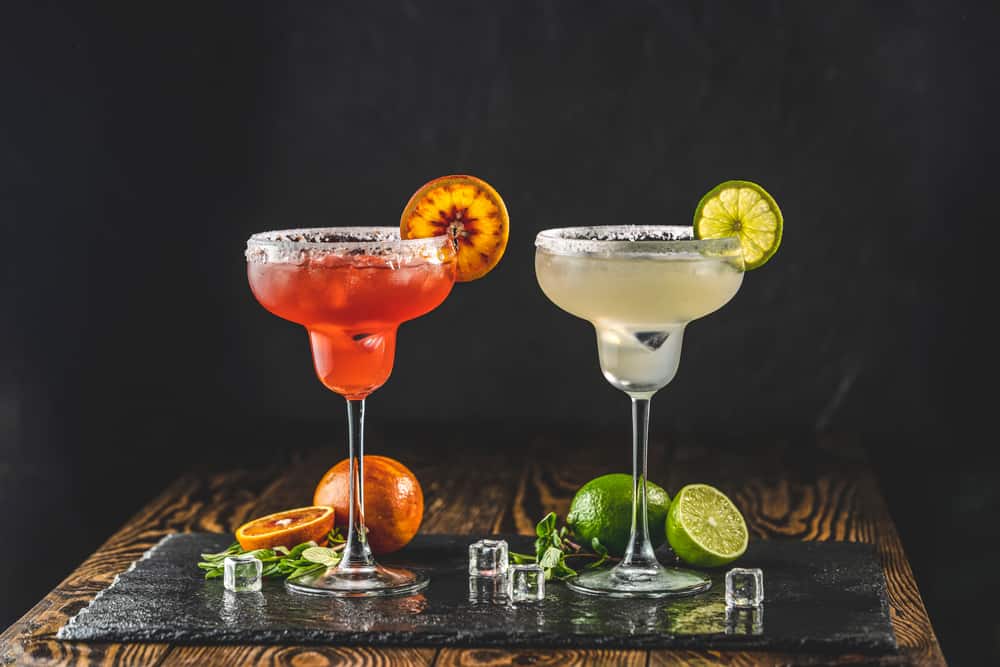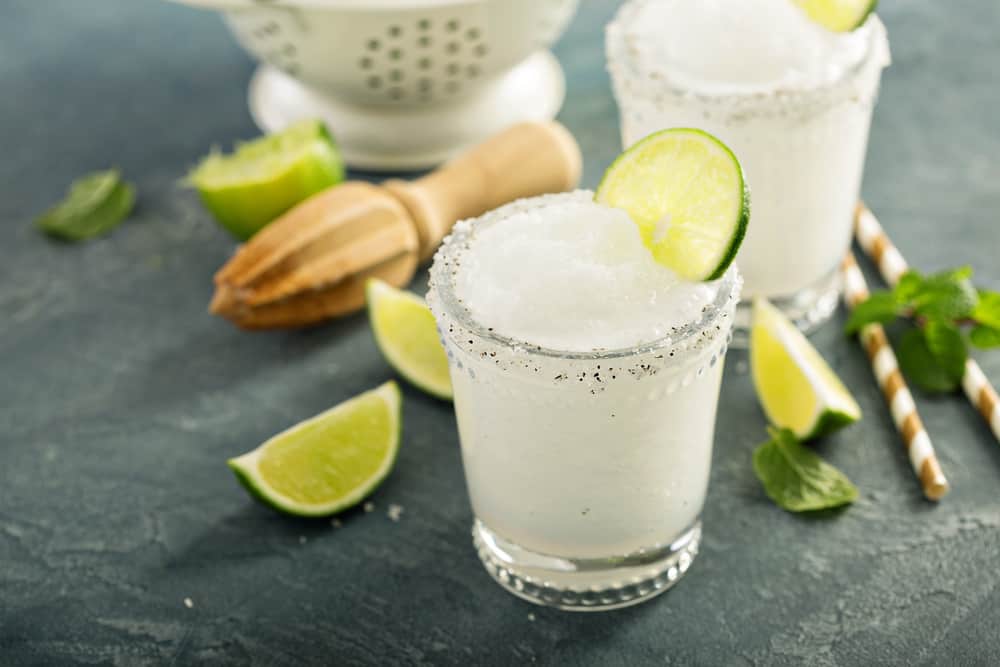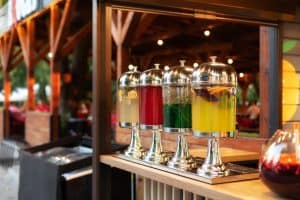
The other day I heard someone order a “skinny margarita.” So, as a devoted tequila lover, I stopped the barkeeper to ask them about it to learn the difference between a classic margarita and the skinny form.
You might likewise wonder but fear not. We have done the sampling for you to answer the question: What is the difference between a classic margarita and a skinny margarita?
A skinny margarita is a variation of the classic margarita. The name suggests it’s a lighter version of both alcohol- and calorie-wise. The ingredients used to make a skinny margarita set it apart from the classic version.
We’ll explore both the regular and skinny margarita and look at the significant differences between them in terms of ingredients.
Classic Margarita

I prefer the term classic margarita, but we likewise know it as a traditional or regular margarita, and I will apply these terms interchangeably.
Classic margarita pairs nicely with food (did anybody mention nachos?).
The regular margarita is a slight variation on the classic sour cocktail–one of the oldest types of cocktails. It includes only three ingredients: spirit, citrus, sugar, or sweetener.
The sour’s origins aren’t exact, but one of the early recipes appeared in 1862 in the renowned How to Mix Drinks by Jerry Thomas, and you can check out the free legal copy here.
When replacing the sweetener or sugar element with citrus, we get a daisy cocktail–a branch of the sour cocktail.
Daisy cocktails start out as a pure sour cocktail–2 ounces of liquor, with a ¾ ounce of citrus juice and 1 ounce of simple syrup. Adding a liqueur such as Cointreau or triple sec converts it to a daisy cocktail or, in our case, a margarita.
In the margarita, the liquor base is tequila as opposed to brandy. A basic regular margarita recipe is accessible here. You combine tequila Blanco, Cointreau, or triple sec, and fresh lime juice; shake it in a cocktail shaker with ice until cold, pour, and serve.
Skinny Margarita

The skinny margarita is a “lightweight” variant of the regular margarita. It has less liquor and, depending on the ingredients, fewer calories. The main difference between skinny and regular is their sweetness. A skinny margarita is sweeter than a classic margarita.
But, there is no official definition of a skinny margarita because recipes can vary a lot.
When scouting for the “original” skinny margarita, we enter the early 1990s. Julio Bermejo made Tommy’s Margarita at Tommy’s Mexican Restaurant in San Francisco. It lacked the characteristic orange liqueur. Instead, it was replaced with agave syrup to harmonize tequila and lime.
The die-hard bartenders and fans will maintain that it is not a pure margarita without the orange liqueur, but we will appreciate our skinnies, anyway.
The skinny margarita became typical of the lighter and cleaner style of consumption and refreshment, which swept California around the change of the last century.
If you are seeking a low-carb, low-calorie version of the margarita, you can try some of the following sweetener options:
- Agave syrup, as per the original created by Julio Bermejo. They make it from the agave plant, which is also used for tequila–a perfect combination of tastes.
- Cane sugar in combination with agave syrup, but this combination is rarely found. This is also not a very “skinny” option if you’re watching calories.
- Monk fruit is 200-250 times sweeter than regular sugar, so be mindful when using this.
- Corn syrup is used in most pre-made options, but the problem is that most of them use HFCS (high fructose corn syrup), which is detrimental to your health.
- Allulose is a type of sugar that occurs naturally in small quantities and is labeled a ‘rare sugar.’ Although our bodies absorb it, our bodies metabolize very little of the allulose. Thus it isn’t counted as calorie-loaded. Allulose falls under carbohydrates, though. It is also a safe option for people with diabetes.
- Xylitol is a sugar alcohol–a hybrid molecule of sugar and alcohol and contains 40% fewer calories than table sugar. This is used as a low-carb sugar replacement, too.
- Club soda is another option to tone down the sweetness in your skinny margarita.
Of course, you need the sour element to balance the sweetness.
Lime juice is a non-negotiable ingredient. A margarita without lime juice is not a margarita.
You can also use orange juice instead of orange liqueur. For a low-calorie option, you can use the orange extract to achieve the orange taste.
Conclusion
The regular margarita basically swapped brandy for tequila in the ‘traditional’ sour cocktail recipe. The skinny margarita just took it a step further.
In a single word, the difference is sweetness. Because you would generally swap the orange liqueur out for a sweetener or syrup, a skinny margarita will be sweeter than a classic margarita.
Blanco is also known as silver or Plata tequila. Either aged up to two months in steel tanks or immediately bottled after distillation. It features citrus, grass, and pepper notes and blends seamlessly into citrus-based cocktails.
Reposado literally means ‘rested’–aged between two months and one year in steel tanks or oak barrels that were previously used for American whiskey. Flavor notes, such as vanilla and caramel, reflect the wood used during aging. It forms the middle between Blanco and Añejo; complex enough for sipping and mixing into cocktails.
Añejo is an ‘extra aged’ tequila, aged between one and three years in the barrel. They limit barrel size to 600 liters (158.5 gallons). Amber-colored, smooth mouthfeel with a complex flavor of vanilla, caramel, baking spices, and dried fruit. We typically enjoy it as a sipping tequila.
Extra Añejo, or ultra aged. It was recognized by the CRT in 2006. A minimum period of aging is 3 years. Agave enthusiasts bemoan the fact that it lacks the agave taste because of the time spent in oak barrels.
The CRT does not standardize Cristalino, but it deserves mention. A charcoal-filtering process removes the naturally occurring colors and some notes associated with oak barrel aging. The tequila they use ranges from reposado to extra añejo. Cristalino combines the crisp notes associated with Blanco, delivering the best of both worlds.









